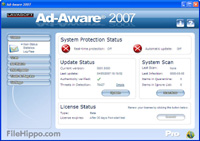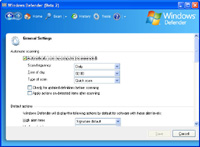

There are other kinds of nasties called malware that may not come as a virus. They are often installed when you download that nifty free utility you found on the Internet. Some, such as the now infamous Sony rootkit they tried to keep their music from being shared, are installed by “legitimate” software (I think installinganything the user isn’t clearly told is being installed should be punishable by a long time in a small room with bars).
Malware is responsible for things like slowing your computer down, annoying pop-up windows when you are surfing the Internet, spyware which sends information about what you are doing, even “bots” - programs that take over your computer (frequently used by spammers to send millions of emails).

I use two programs to remove malware, largely because even with frequent updates no one program seems to find it all.
The first program I use is the free version of Ad-aware (www.lavasoftusa.com). I first ran into this program almost 10 years ago and have been using it ever since. I found it can detect and usually remove almost all the malware on my system (including tracking cookies, which may be good or bad, sometimes they hold your log in information when you check remember me).
The other program I use is Microsoft Defender (www.microsoft.com/windows/products/winfamily/defender/default.mspx). The price is right (free) and it seems to find and remove anything Ad-aware doesn’t. You can also set it up to either run on demand or as a continuous scan like your anti-virus.
Don’t let malware make your computer run “funky.” It’s easy and free to fix.
